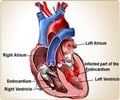Cefazolin Medication Information
Get detailed information on Cefazolin, including pronunciation, uses, dosage guidelines, indications, and instructions on how and when to take it and when to avoid it.
The updated prescription information on Cefazolin provides an overview of possible side effects, precautions, warnings, and storage tips.
You'll also find brand names used in india and internationally, along with pricing details. For further clarification, consult your healthcare provider.
Generic Name : Cefazolin Pronunciation : sef a' zoe lin ICD Code : Y40.1 Therapeutic Classification : AntibioticsTrade Names/Brand Names of Cefazolin
India :
Ozolin (500mg) |
Reflin (500 mg) |
Cezolin (500 mg) |
Azolin (1 gm) |
Azolin |
Cefadin (250 mg) |
Reflin |
Cefadin |
Cefadin (1 gm) |
Lyzolin
International :
Ancef, Kefzol
Why is Cefazolin Prescribed? (Indications)
This medication is a cephalosporin antibiotic, mainly used to treat bacterial infections in different parts of the body (the lung, bone, joint, stomach, blood, heart valve, and urinary tract). It is also used to prevent bacterial infections before, during, or after certain surgeries. It works by killing sensitive bacteria.When should Cefazolin not be taken? (Contraindications)
Hypersensitivity.What is the dosage of Cefazolin?
IV/IM- Susceptible infections 0.5-1 g 6-12 hourly. Max: 6 g/day, up to 12 g/day in severe infections.Surgical prophylaxis- 1 g 30-60 minutes pre-op, followed by 0.5-1 g during surgery for lengthy procedures. Continue with 0.5-1 g 6-8 hourly post-op for 24 hour.
How should Cefazolin be taken?
It comes as a solution for injection, to be administered by a healthcare provider. It is usually administrated by either intramuscular injection (injection into a large muscle) or intravenous infusion (injection into a vein).What are the warnings and precautions for Cefazolin?
•Caution should be exercised in patients with history of liver, kidney, and gastrointestinal diseases.It may harmful to kidney function, pregnancy and breast feeding.
Consider possibility of pseudo membranous colitis in patients who present with diarrhoea after antimicrobial usage.
Risk of seizures in patients on high doses, especially in kidney failed patients.
• It may decrease prothrombin activity; monitor prothrombin time in patients at risk e.g. those on anticoagulant treatment, prolonged antimicrobial treatment or those with kidney or liver impairment.
What are the side effects of Cefazolin?
Central Nervous System- Hyperactivity.Gastrointestinal- Abdominal pain, anal itching, loss of appetite, inflammation of colon, diarrhea, nausea, fungal infection of mouth, stomach cramps, vomiting.
Genitourinary- Genital itching (including genital fungal infection, vaginal inflammation, vulvar itching).
Liver- Liver inflammation.
Blood- Anemia, bleeding, decrease in white blood cells, platelets.
Lab tests- Increased level of liver enzymes, prolonged blood clotting time.
Local- Pain, inflammation of veins.
Musculoskeletal- Tightness of muscle.
Genitourinary- Increased BUN (Blood, urea, Nitrogen) and creatinine, kidney function impairment, toxic nephropathy.
Miscellaneous- Allergy (including anaphylaxis, drug fever, eosinophilia, severe allergic reactions, toxic hives), super infection.
What are the other precautions for Cefazolin?
Avoid long-term use, otherwise it will cause secondary infection.What are the storage conditions for Cefazolin?
Injection: Store at 25°C.Store in refrigerator. Do not freeze the medication.Schedule : H
Prescription drugs - Drugs to be sold only under the prescription of a Registered Medical Practitioner.












